Abstract
In 1953, the fifth year of a malaria control programme with DDT in Eastern Saudi Arabia, the resting of Anopheles stephensi on recently sprayed surfaces suggested the development of resistance in this species to DDT, and this suspicion has been confirmed by tests carried out from 1955 to 1958.
DDT was replaced by dieldrin in 1955 and malaria rates, which had been rising, were again reduced. No dieldrin-resistance has been found in local. A. stephensi strains, and no A. stephensi have been collected from treated villages since the wide use of dieldrin.
A. pulcherrimus, A. coustani var. tenebrosus, A. fluviatilis and A. sergenti have proved susceptible to DDT, but the first two have developed resistance to dieldrin. A. pulcherrimus was rarely collected before and during the use of DDT but has become increasingly frequent since the introduction of dieldrin. Its possible role in transmitting malaria in the area is discussed.
Egg measurements and ratios on several series of eggs obtained from locally collected A. stephensi fall within the limits of the range set for A. stephensi mysorensis, not previously recorded outside India.
Full text
PDF
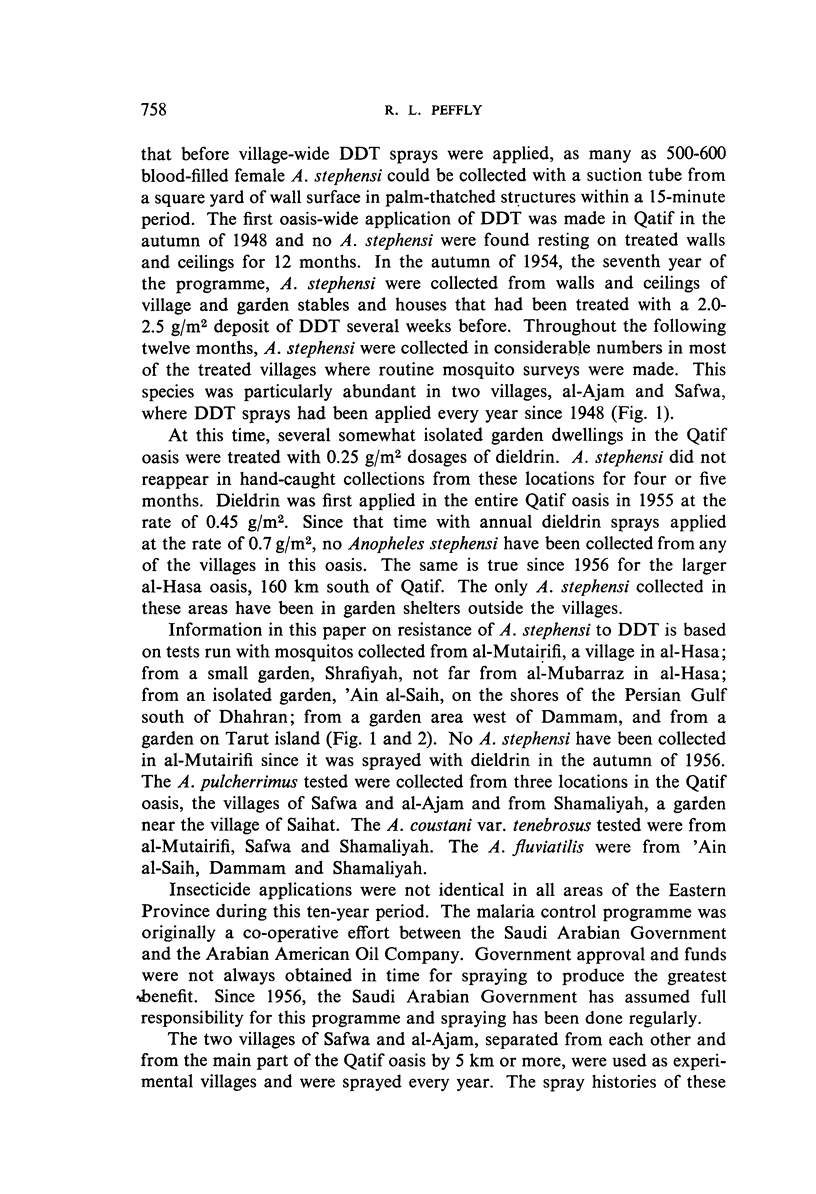
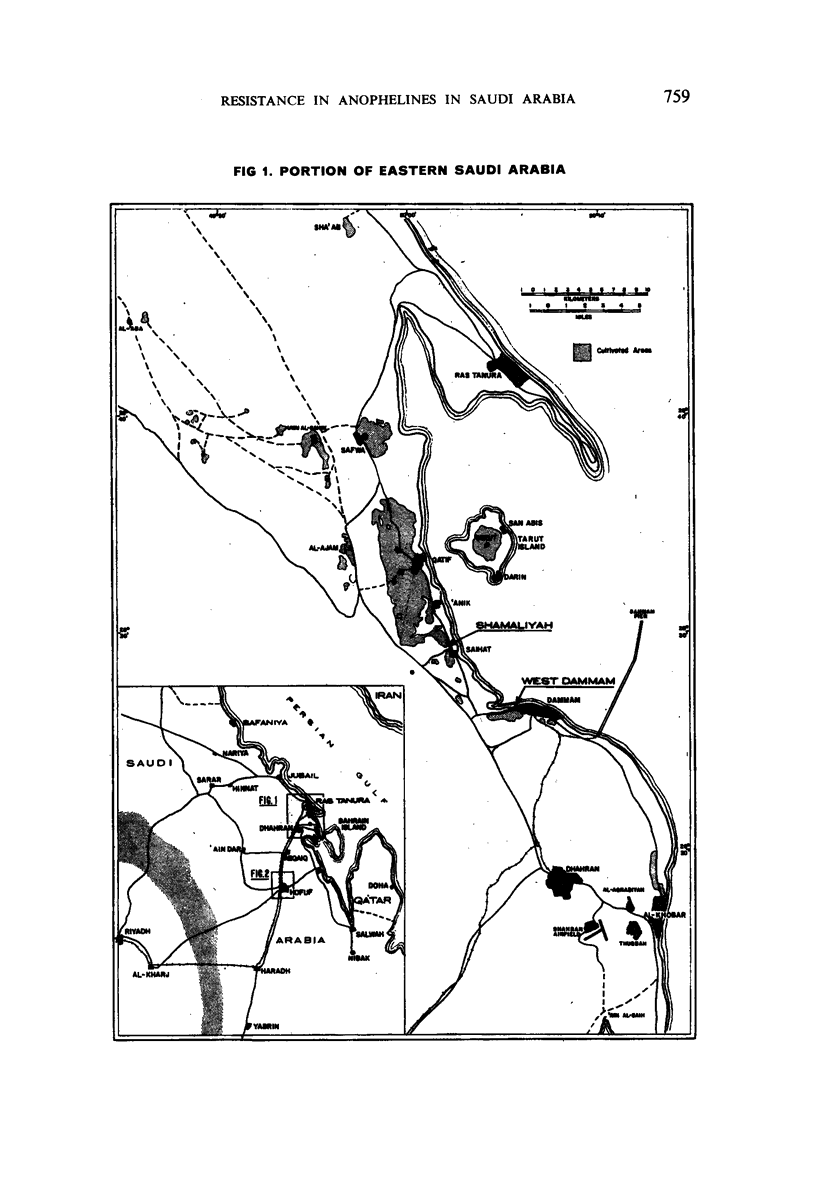
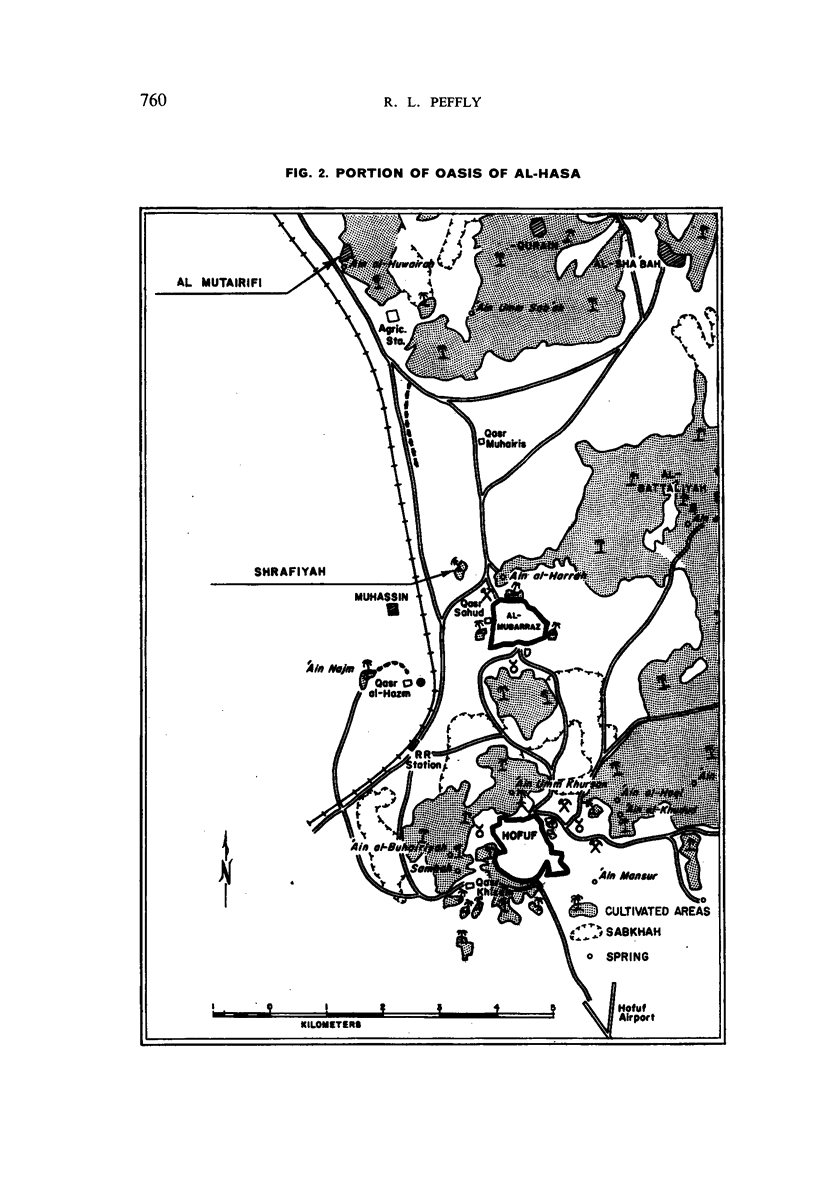
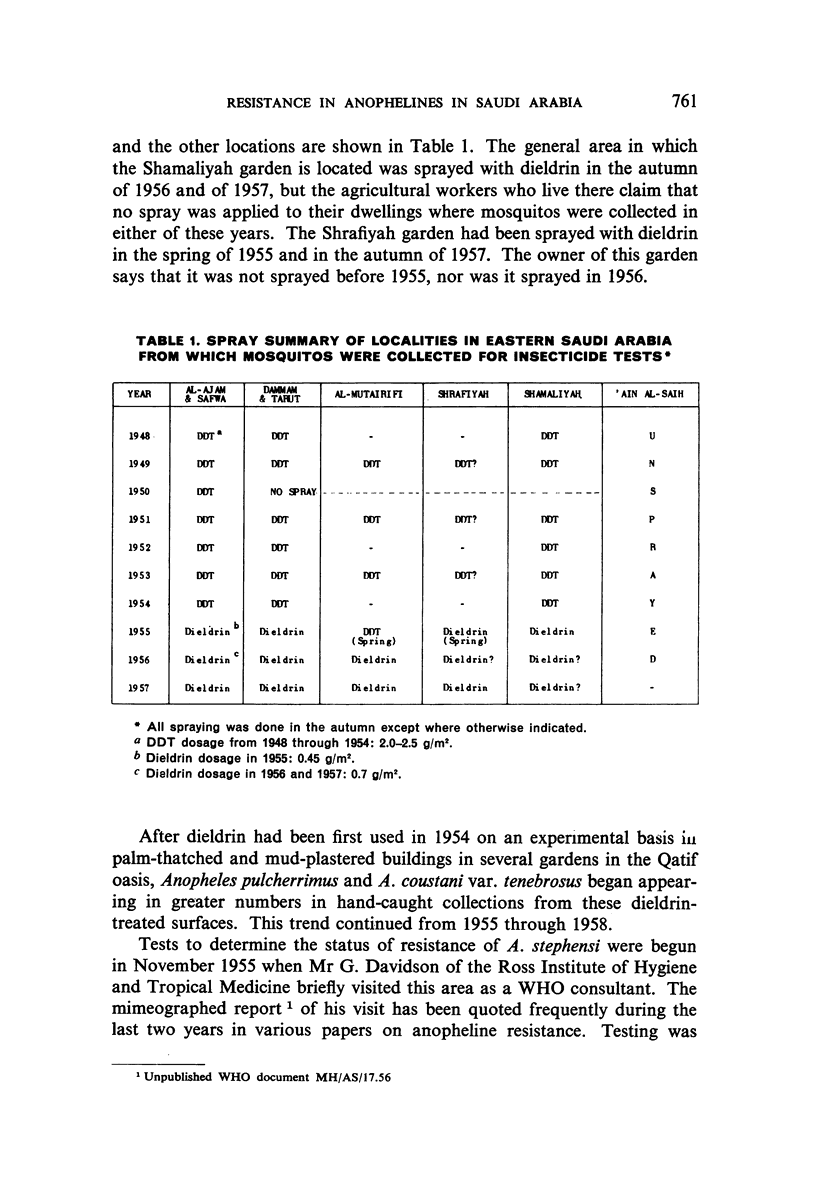
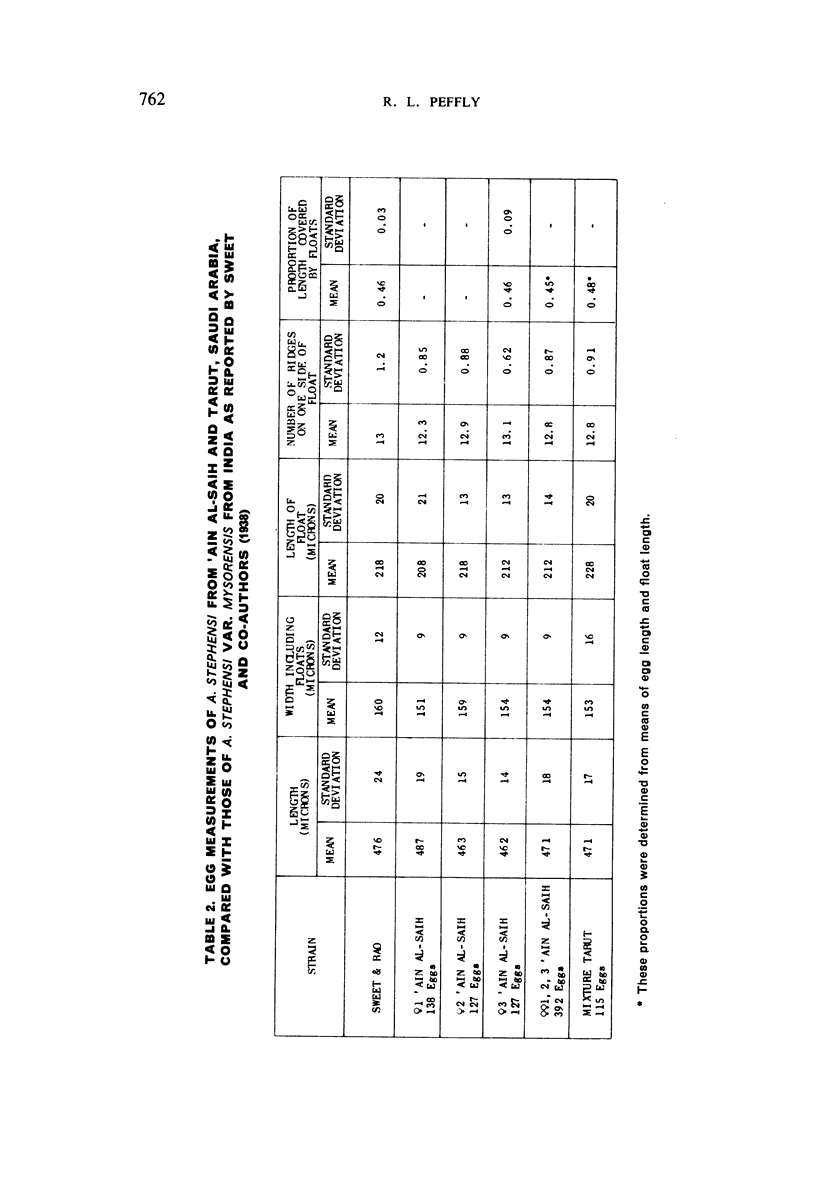
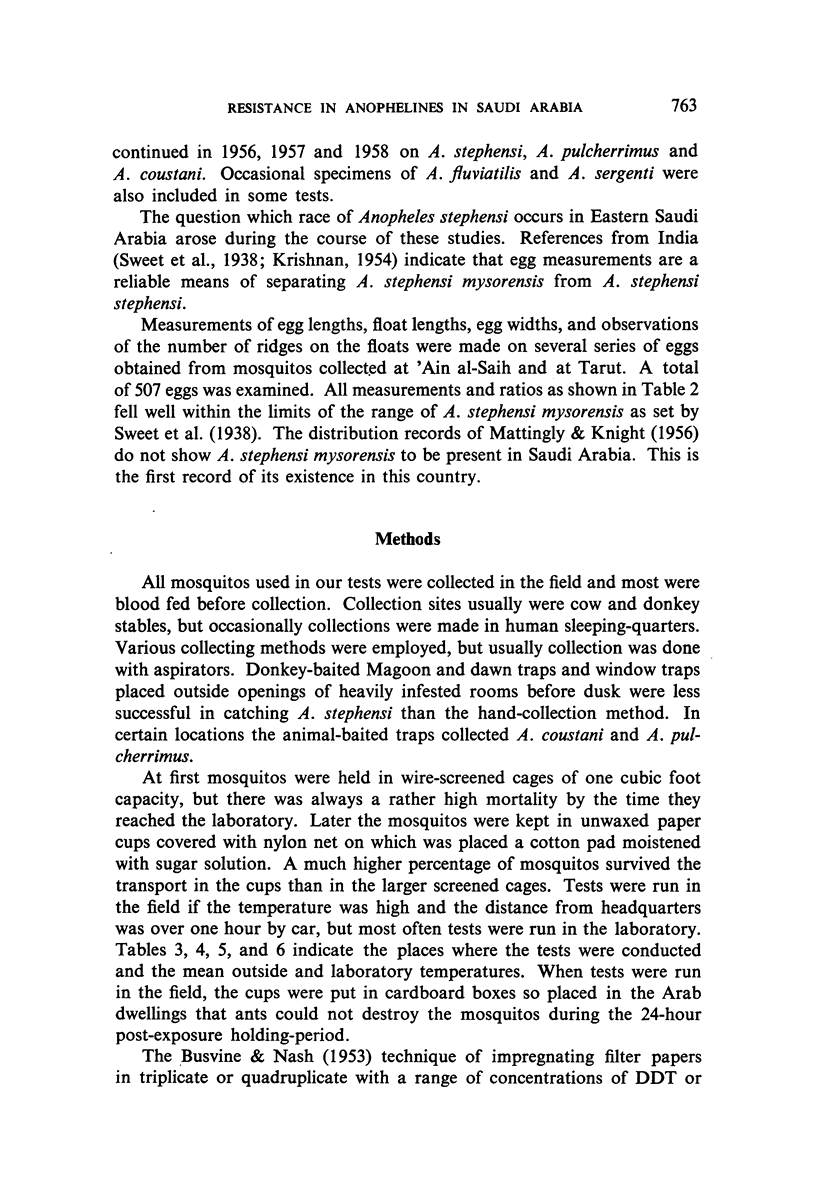
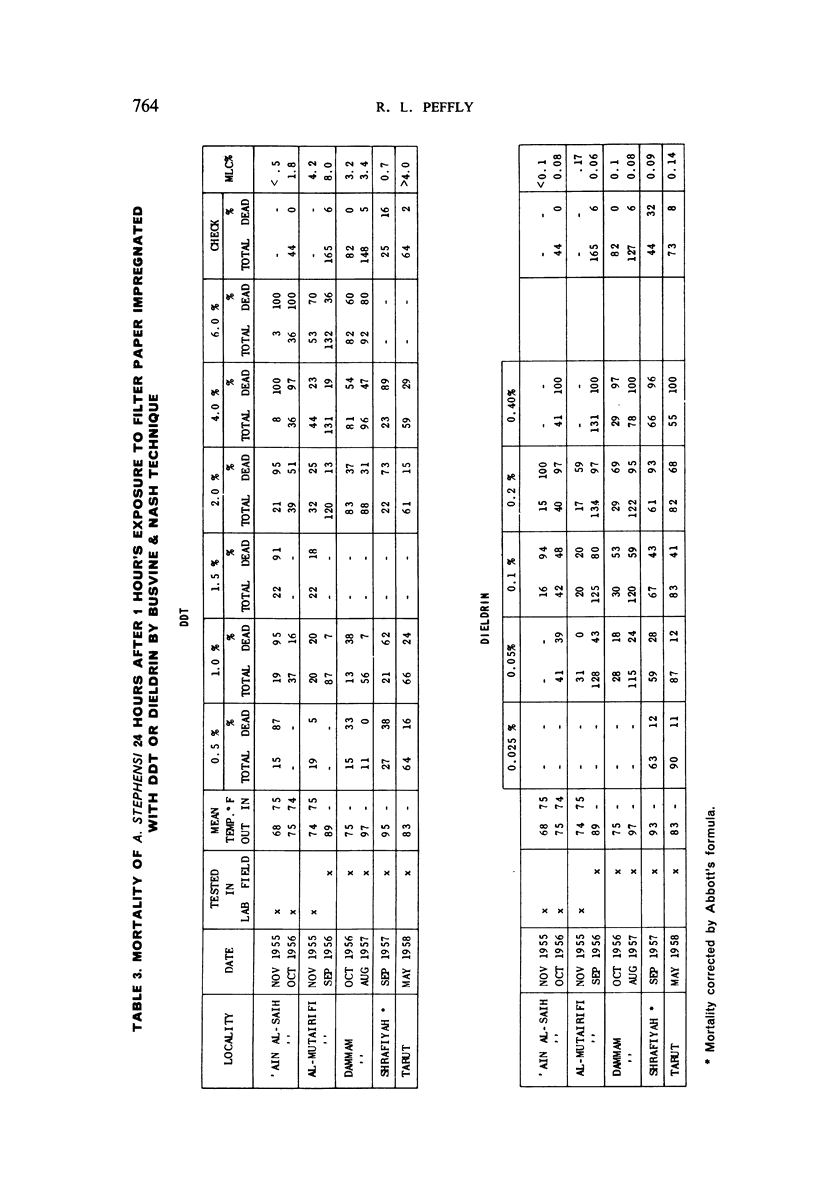
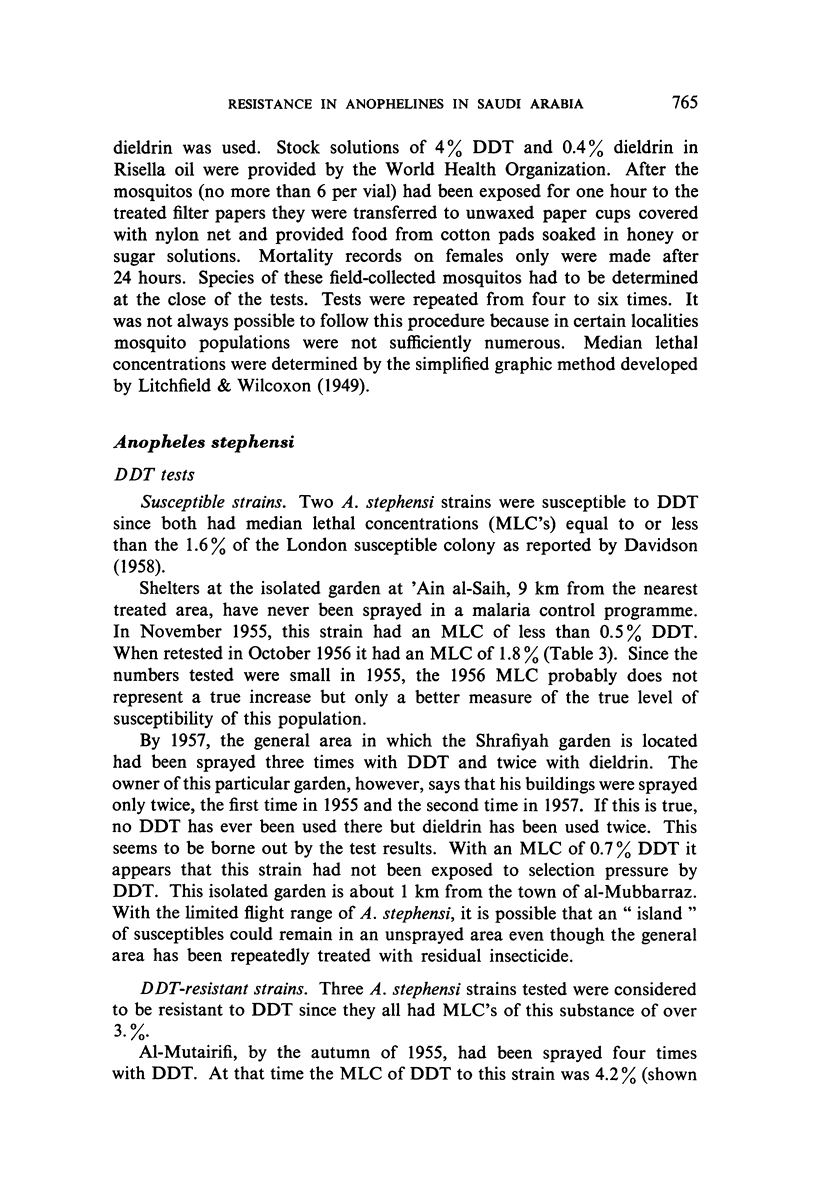
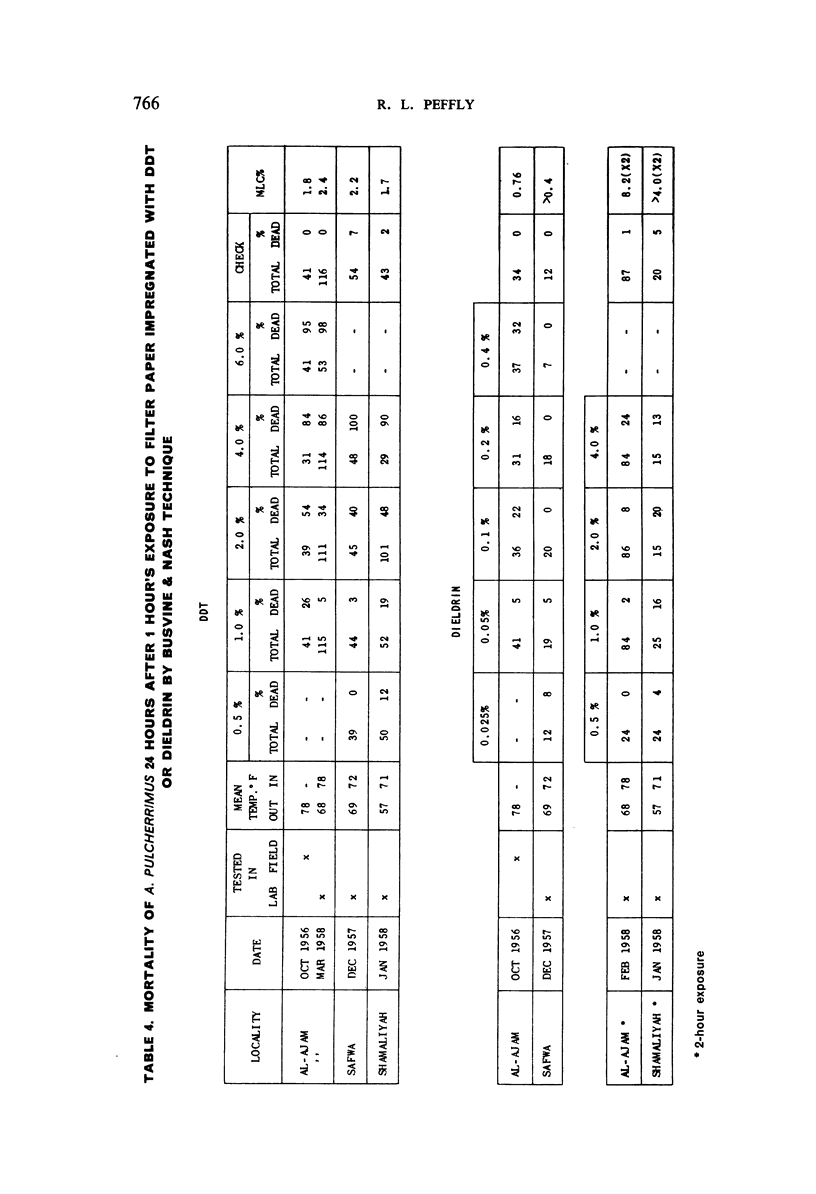
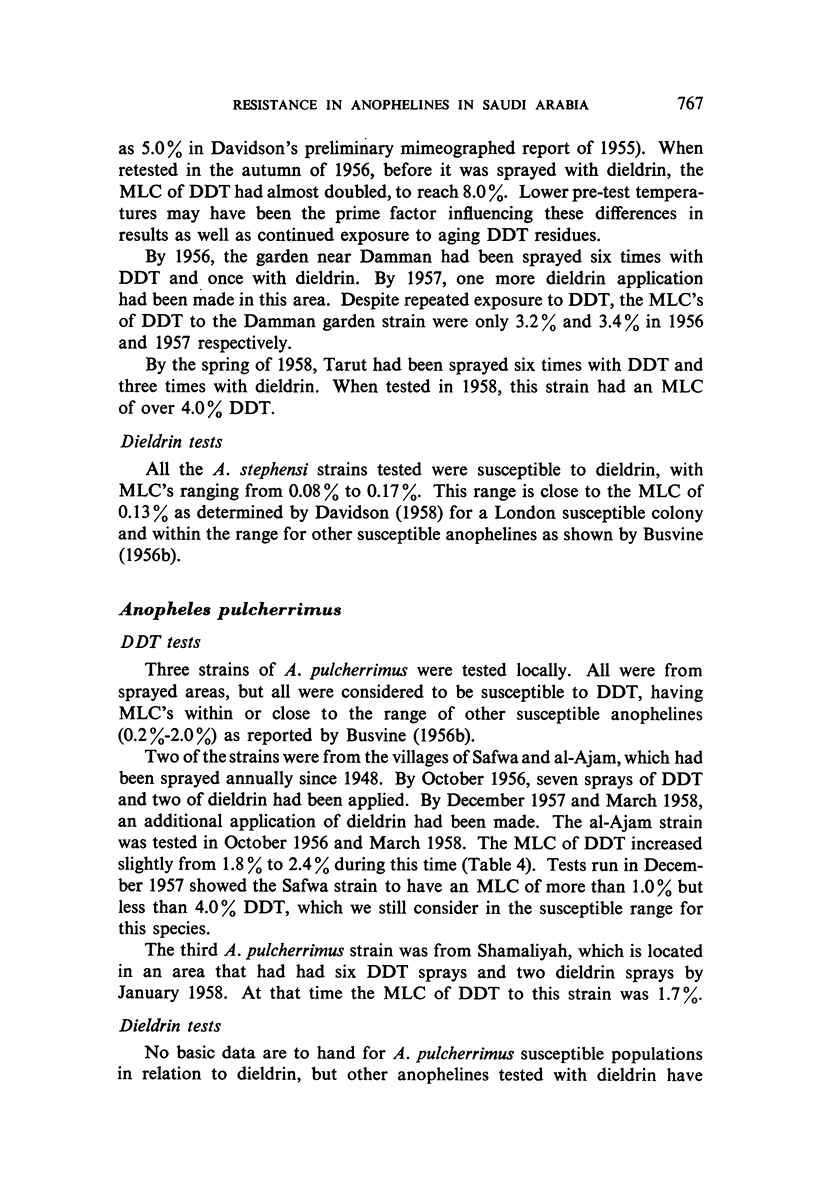
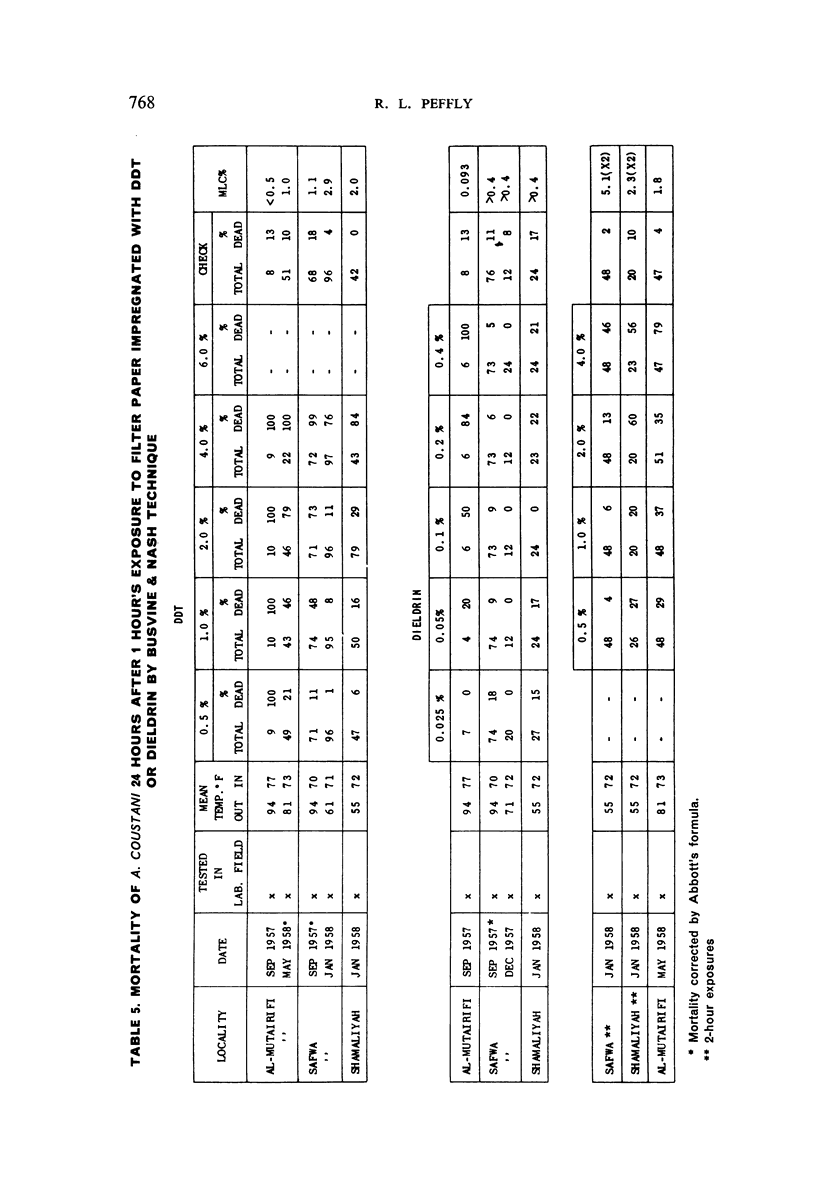
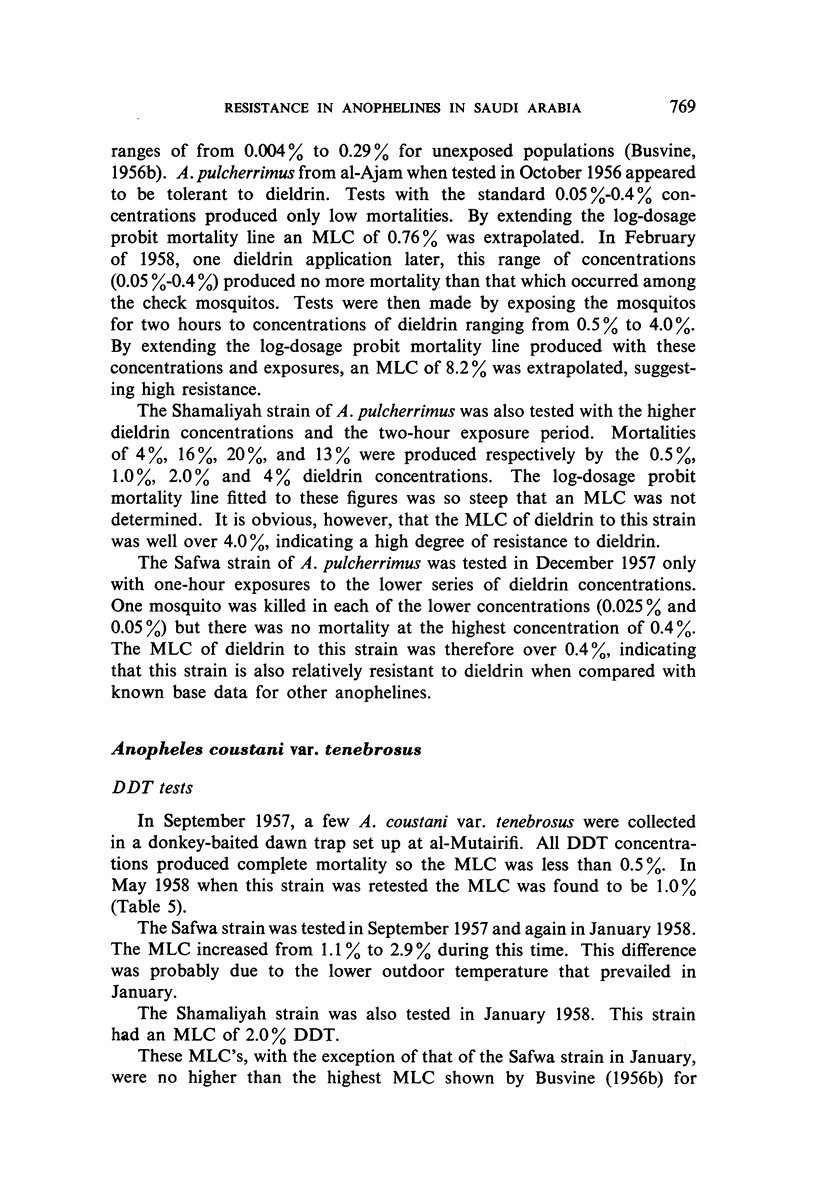
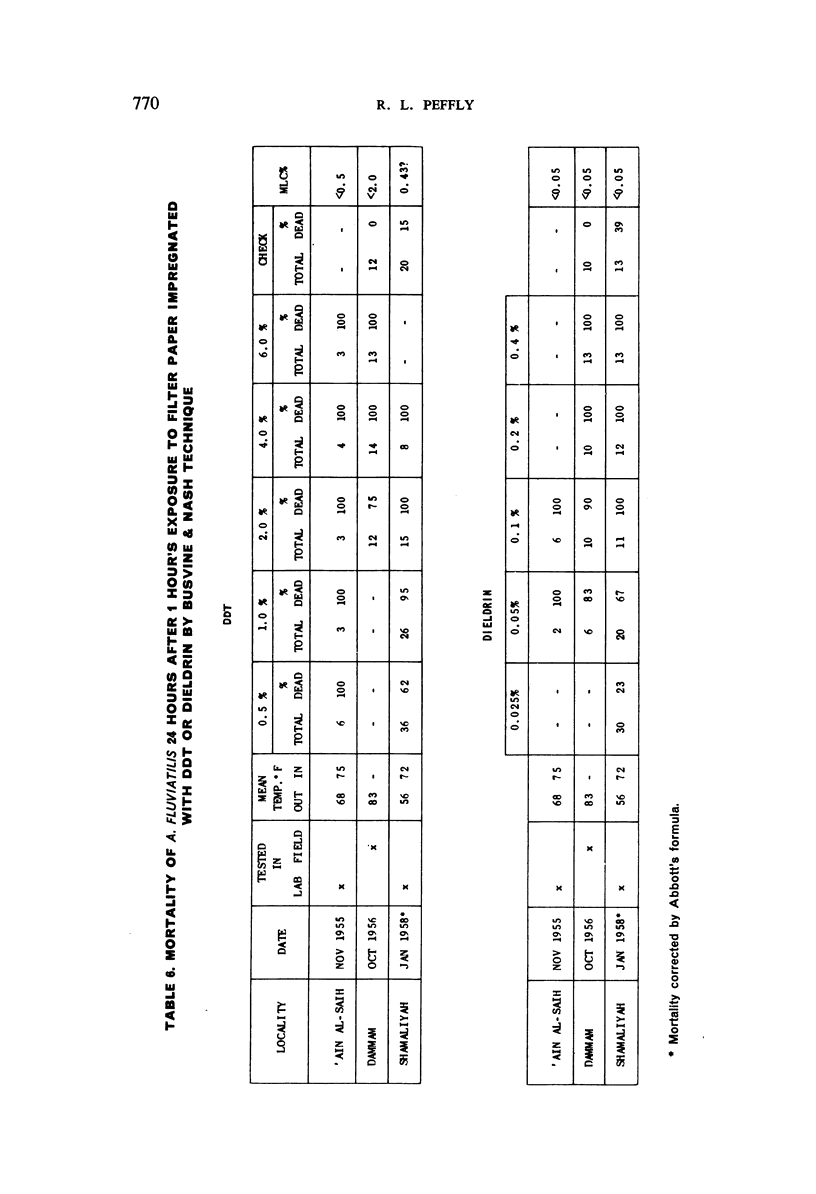

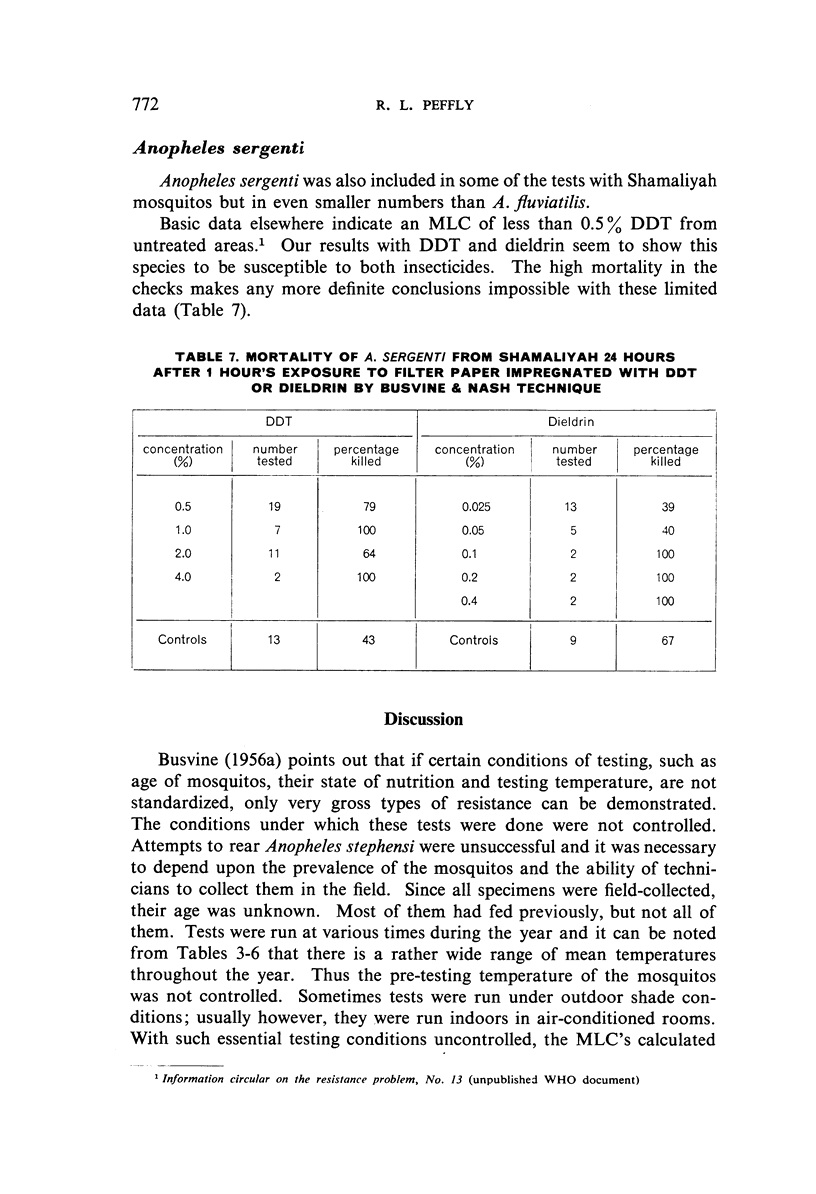
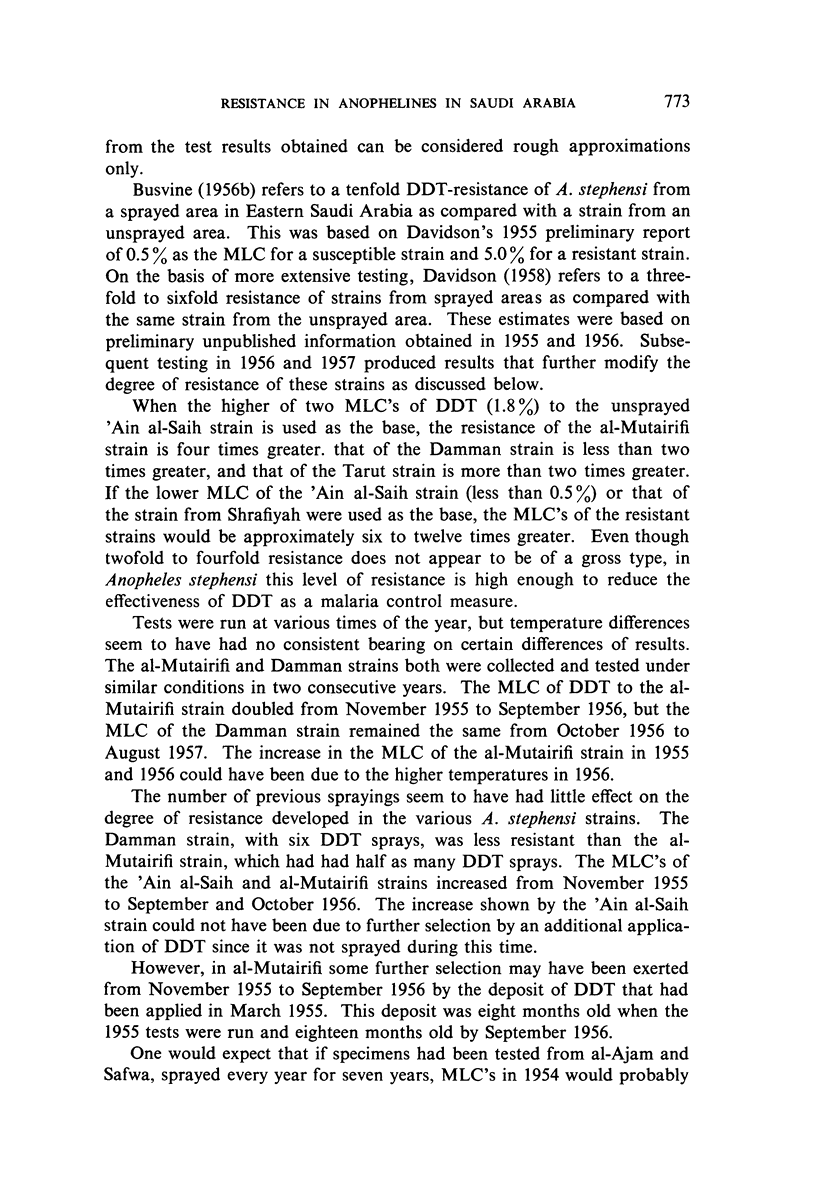
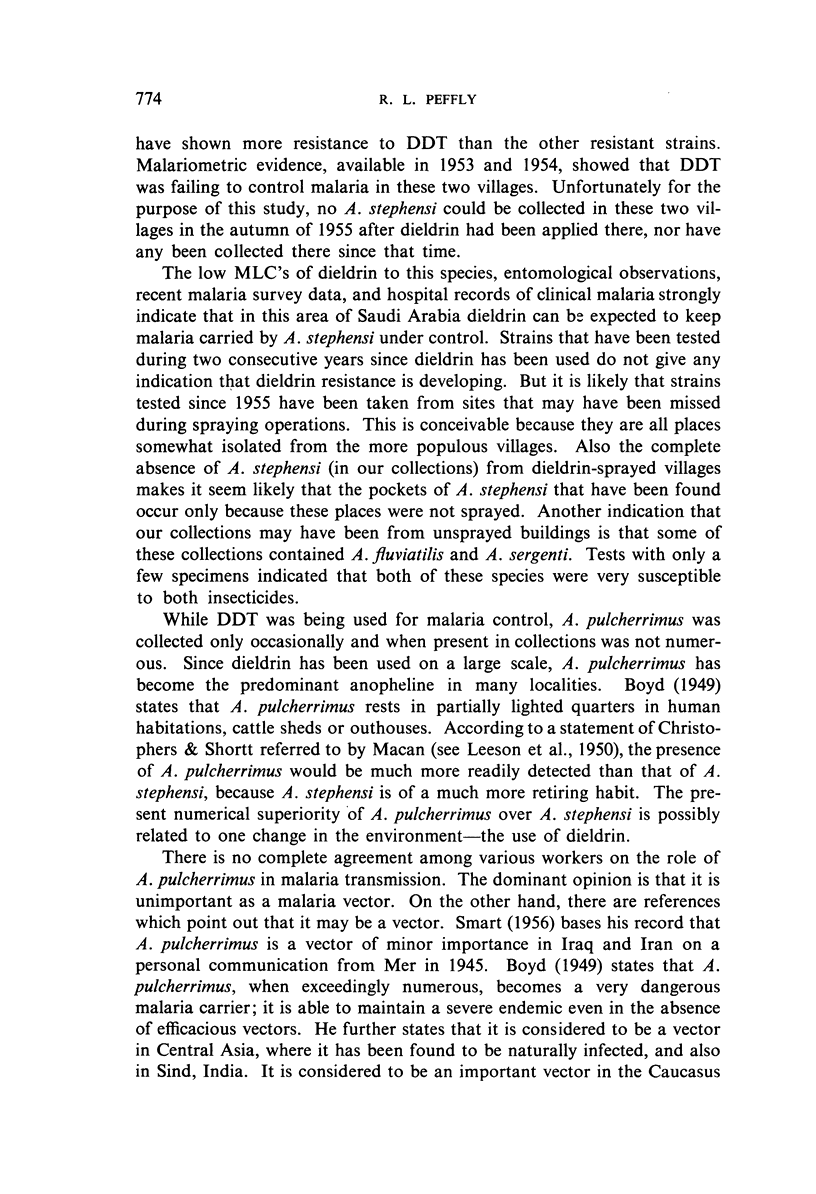
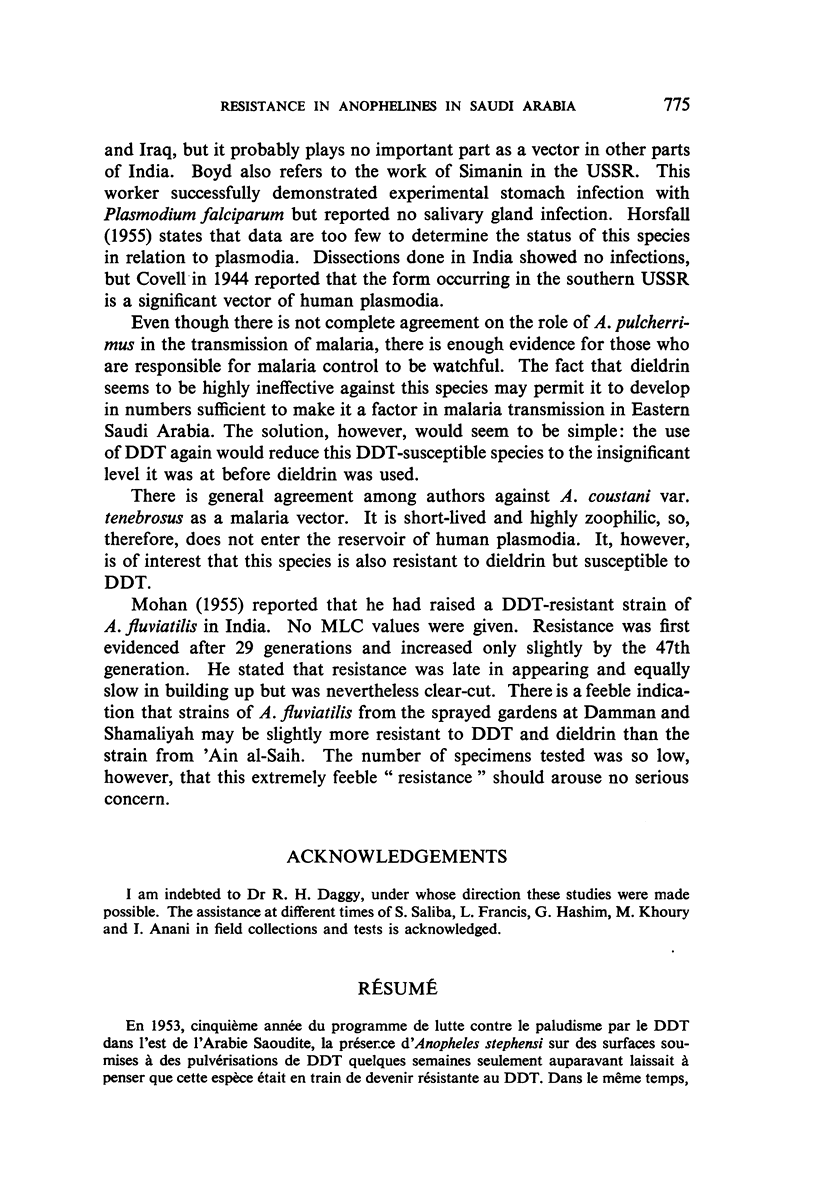
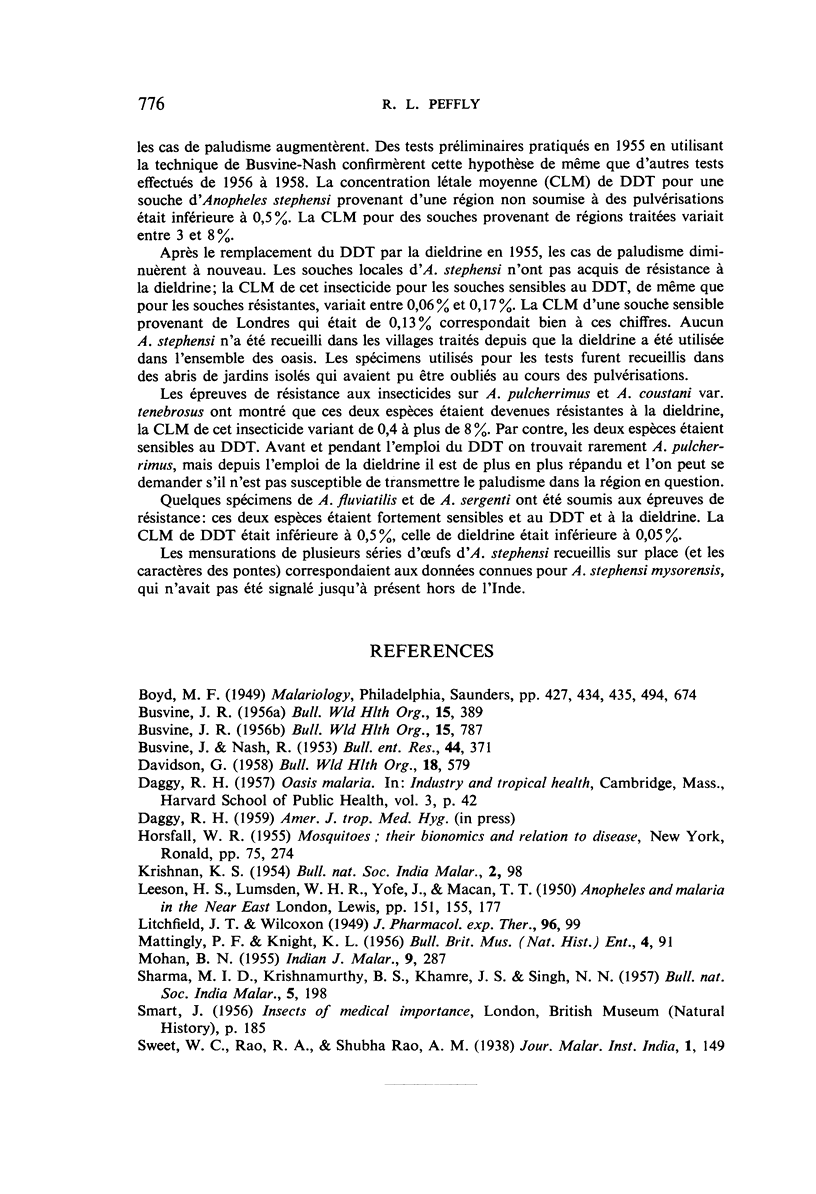
Selected References
These references are in PubMed. This may not be the complete list of references from this article.
- BUSVINE J. R. A survey of measurements of the susceptibility of different mosquitos to insecticides. Bull World Health Organ. 1956;15(3-5):787–791. [PMC free article] [PubMed] [Google Scholar]
- BUSVINE J. R. The significance of insecticide-resistant strains; with special reference to pests of medical importance. Bull World Health Organ. 1956;15(3-5):389–401. [PMC free article] [PubMed] [Google Scholar]


